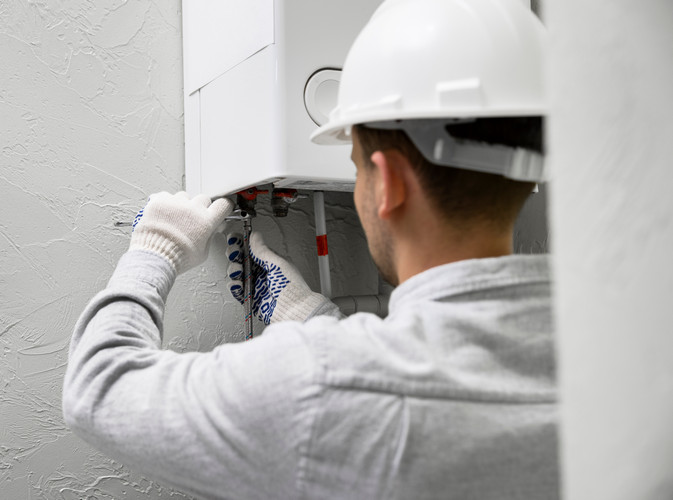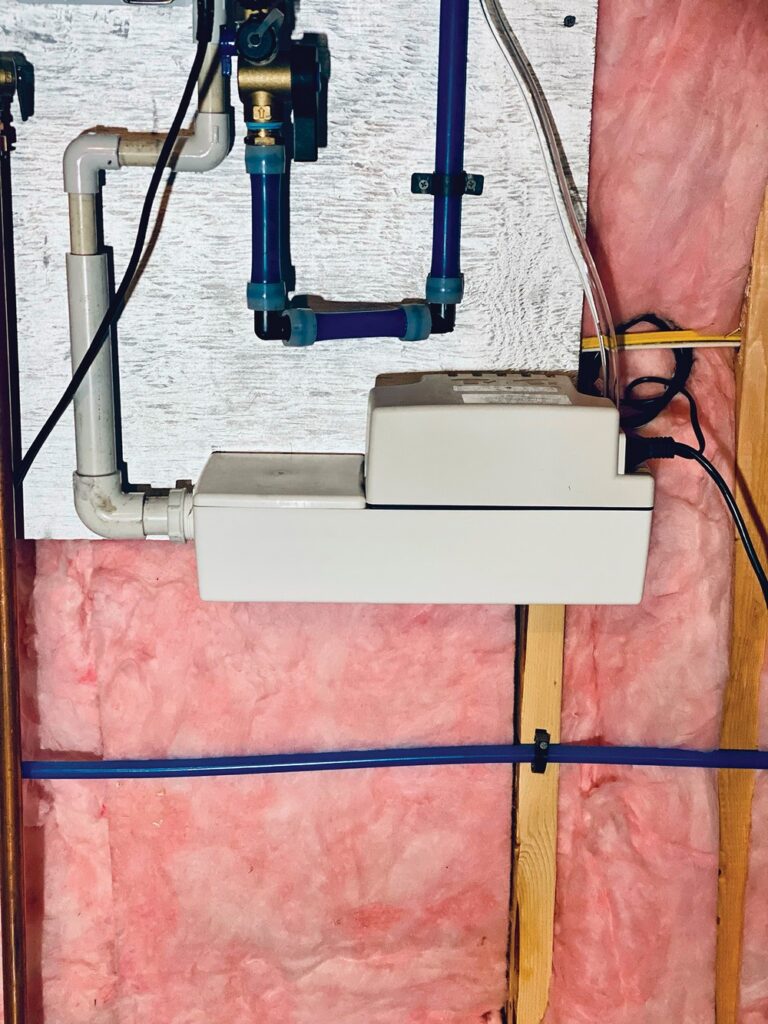Protect High-Efficiency Hydronics Systems By Neutralizing Condensate Waste
By Luis Arias

The popularity of condensing technology in gas-fired water heaters and boilers has increased steadily since their introduction several years ago. Greater energy savings have played an important role, because condensing water heaters and boilers offer significant efficiency gains over non-condensing models.
Condensing water heaters use a secondary heat exchanger to boost efficiency by capturing more heat from combustion gases as they escape up the flue. This secondary heat exchanger then preheats the incoming water on its way to the primary heat exchanger, increasing the unit’s efficiency.
Capturing more heat from combustion gases lowers their temperature, necessarily creating condensate in the flue: an acid-water mixture that drips back into the water heater and through the secondary heat exchanger.
Allowing this mixture to drain through the plumbing system untreated creates serious corrosion and other problems. The good news: condensate neutralization and removal are impactful measures to ensure proper system performance and protection of the drainage system in a building or residence.

Why neutralization is important
Discharge coming from high-efficiency, condensing water heaters or boilers should be treated with some sort of neutralization process. That’s the only way to protect customers’ plumbing from the potentially harmful side effects of the condensation process.
Condensate tends to be acidic because of the chemical reaction caused by the heat of the gas burner. Indeed, the higher the efficiency rating, the higher the acid level in the water runoff.
If this runoff is disposed of directly through a structure’s plumbing system, its piping could corrode or rust over time, necessitating costly repairs. In addition, pumping the waste outdoors or into sanitary sewers could contaminate the groundwater or degrade the local water infrastructure (local sewers and water treatment facilities). For homes with septic tanks, condensate waste might also destroy the good bacteria essential to keeping the system operating properly.
The higher, front-end costs of high-efficiency equipment are typically justified by lower energy consumption and the resulting lower monthly fuel bills. But those savings could be wiped out, and then some, if a plumber must return in a few years to tear out and redo all the plumbing.
The smart, long-term solution is to neutralize the condensate waste’s acidic content before it enters any piping.
Neutralization can be accomplished in several ways:
1) Manually, by cutting a bed of limestone into the floor where the condensing water heater, boiler, etc., is located, and letting the condensate drip into it.
2) Positioning a limestone-filled cartridge inside of the condensing unit to neutralize the water internally.
3) Hooking a neutralization kit — essentially, a piece of pipe filled with limestone — to the exterior of the condensing equipment and letting the condensate flow through it.
4) Condensate pumps: In many residential and commercial applications, the condensate evacuation cannot always be done by gravity to an existing sewer line, usually because the application lacks conventional, below-floor drainage. In such cases, a condensate pump becomes essential. The pump ensures condensate waste does not linger inside or around the water heater or boiler
5) Condensate pumps that couple a pump with a neutralizer: The pump moves the condensate from the water heater or boiler through limestone granules in a tray before discharging it into the sewer or septic system. This solution uses the built-in neutralizer to boost the pH of the acidic condensate before it can be discharged into a drain line, which prevents corrosion.
Pro tip: When selecting a condensate pump with a neutralizer, consider a pump capable of serving multiple mechanical systems — up to a combined input total of 500,000 Btu per hour — with an easy-to-refill pH-neutralizing pellet tray.
Note: Not all condensate requires neutralization, however. In these instances, drainage can be routed into a third inlet located on the top of the unit near the discharge line. This drainage bypasses the neutralizer pellets and moves directly to the pump impeller, where it is immediately discharged.
6) Neutralization with gravity feed: A gravity-feed inline HVAC neutralizer can be used when a pump is not necessary to remove acidic condensation from condensing water heater or boiler systems. This type of device can be installed, by itself, when the application’s gravity fall is sufficient for moving the neutralized condensate to the discharge line. It can also work with a pump system when the condensate needs to be pumped into the sanitary line.
Major codes take notice
As the popularity of high-efficiency hydronics products grows, so too will the problem of acidic condensate. This is why the International Plumbing Codes and National Standard Plumbing Codes now require neutralization for corrosive waste.
IPC and NSPC state that corrosive liquids, spent acids or other harmful chemicals that (1) destroy or injure drain, sewer, soil or waste pipe; or (2) create noxious or toxic fumes; or (3) interfere with sewage-treatment processes should not be discharged into a plumbing system without being thoroughly diluted, neutralized or treated by passing through an approved dilution or neutralizing device.
While requiring condensate waste-neutralization, IPC enforcement is spotty. Some sections of the country, such as New England, strictly enforce the code requirements; others — including the Far West — tend to be lax.
According to Energy.gov, high-efficiency condensing boilers, HVAC systems and water heaters will cut fuel costs dramatically. But to achieve maximum value — and to ensure the customer’s money-saving investment does not cause problems that cost thousands of dollars more down the road — it is vitally important to neutralize the condensate waste such units generate.
Luis Arias has been working for SFA Saniflo for 15 years as inside technical sales.
Image by Freepik

